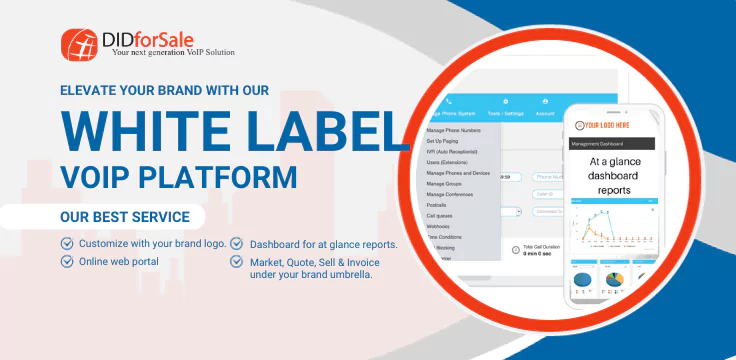What are the major concerns when considering SIP trunking?
- Bandwidth of your internet connection
- Cost
- Flexibility
- Ease of use
- Security
Bandwidth of your internet connection
Sip protocol does not generally use a large amount of bandwidth, and can generally run along with a typical data connection for most mid and small sized businesses. That said, the reliability of the internet connection is key to keeping the voice calls flowing and business running.
For larger businesses, redundant or fail over internet connections are recommended to ensure constant connectivity to your sip trunk provider.
Lack of bandwidth or an unreliable internet connection can cause static in the voice, and in some cases can cause several seconds of silence as if the line has gone dead.
While troubleshooting a VOIP issue between two servers for one nationwide company, we found that the internet connection to one of the servers was so restricted that voice loss and silence happened more than successful calls. To remedy the situation a quick reroute of the sip trunk from one server to the other, and then down a point to point IAX trunk resolved the issue until the client was able to bring in a more reliable internet connection.
Generally we are looking at an average of 170kbps of bandwidth for a typical call, and with today’s internet connections, we should easily handle hundreds of calls simultaneously without issue.
Cost
The cost of sip trunking is another major factor, and is generally far more cost effective over PRI and BRI. While the initial cost can sometimes be more, there are several options to successfully utilize sip trunking. You can choose a hosted solution, or you can implement your own.
When choosing hosted solutions, you can expect to pay from as low as $8.95 per month to $29.99 per month on average, and you can choose from several reputable hosting providers. If you choose to host your own, you will simply by DID’s from a provider, and you will supply your own VOIP server, and gain added flexibility in the configuration.
As with many hosted solutions, you will have limited conference rooms, with extras available for a charge, follow me capability can be limited, as well as voicemail to email functions and other numerous features that are available to you when hosting your own server. Choosing to use a hosted solution can result in a lower cost of hardware, in the short term.
On the other side of the coin, while hosting your own server and gaining access to several features available within the system, you will lose the added Call Detail Record features that several providers will supply with your normal monthly service fee. However they can be added to the system, but are not always straight forward to configure or work with, but can provide as much and in some cases much more detail than what a hosted provider may supply.
Choosing to host your own server also requires the hardware, and depending on the phones you may also need POE switches to power the handsets as well.
Flexibility
Sip trunking allows more flexibility than utilizing PRI’s and BRI’s as you can run much more than simply voice through SIP.
Several hosted providers will also have options for video conferencing, chat capability, as well as texting.
Hosting your own VoIP server will also allow the same functionality as hosted solutions.
With a move to offices through out state and countries and even around the world, video conferencing as well as conference rooms are becoming more important, and the flexibility to include these features into one system with a centralized control allows a lower overhead cost and added productivity between sites.
Ease of use
The ease of using a SIP trunking is as simple as picking up the phone and dialing a number, or simply picking up when the handset rings. But what about the back-end side?
If you are using a hosted solution, you can be sure that there will be support for larger issues, and you will have the option of being able to administer several of the smaller easier configurations yourself.
Hosting your own solution, can be tricky, but once you are set up, and you know you can send and receive calls, configurations for the most part are done via a GUI interface and are generally fairly easy and straight forward.
While certain configurations such as an IVR tree and it’s recordings can become large and complex rather quickly, a simple flow chart can help to speed the process and ease the configuration on the server side greatly.
Security
Security is not just a concern for email, or passwords, but for any device connected via the internet today. And make no mistake that most ‘hackers’ begin with VoIP servers.
If you are a small or medium size business then you may want to look into hosted solutions simply based on security. However, with the several available VOIP server operating systems available, their reliability and support, security in regards to the SIP protocol has and is becoming better and better everyday.
Via the use of simple base operating system tools such as IPTABLES, and restricted access via ssh you can greatly increase the security of your system. When those are expanded to include things like Fail2ban and other features within the VOIP applications, systems can be built to be near hack proof.
In my current position, when I first started I rebuilt VOIP severs on a weekly basis as new hackers logged in and erased databases and configuration files, through the use of a few simple and generally accepted admin practices, I have virtually stopped unwanted entries into the servers. Now, that is not to say that there are no longer attempts, because the fact is that programs exist like sipvicious that will scan IP ranges looking for traffic across port 5060, and then it’s as simple as running something like Kali Linux to get into the system. But implementing the above mentioned system, you can easily see incoming attempts long before access is gained, and simply block those address.




